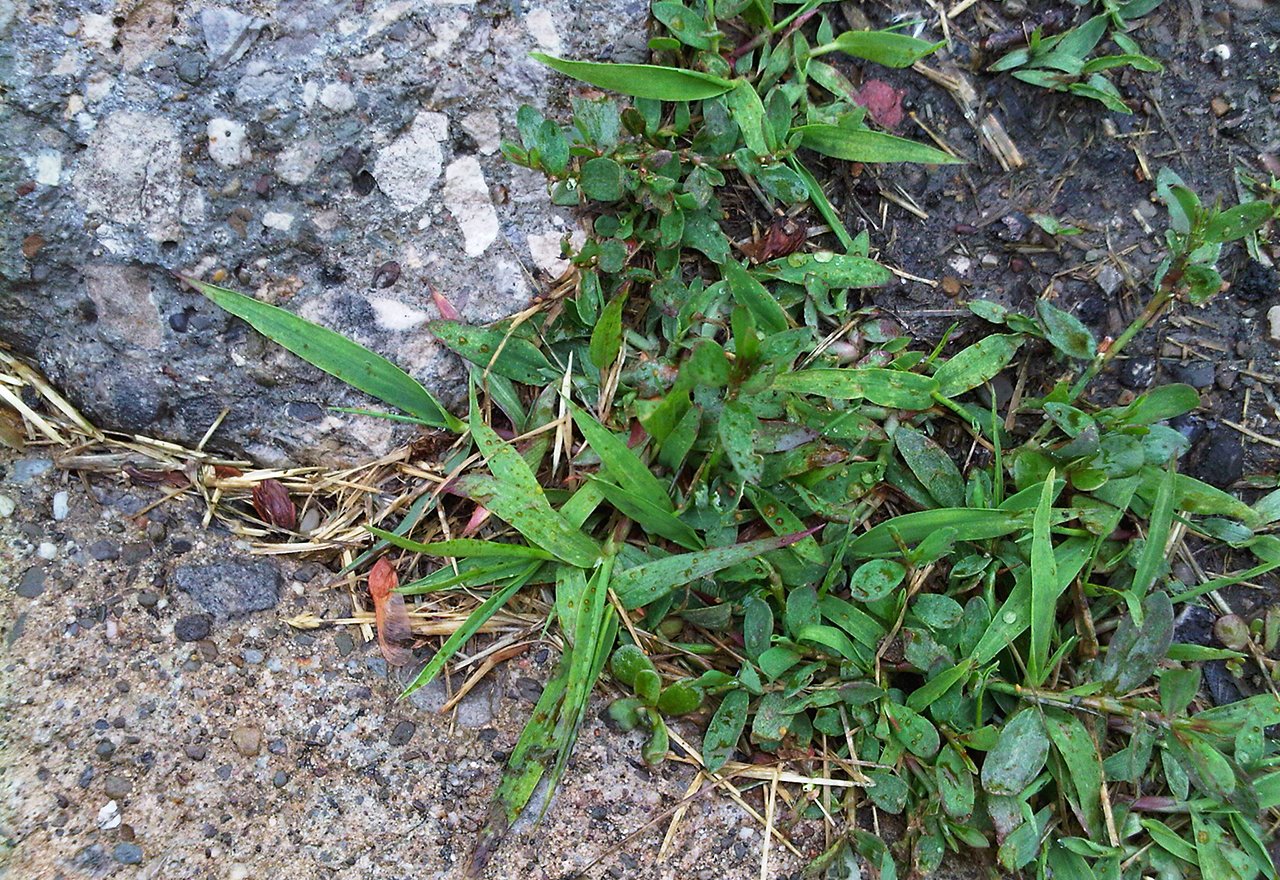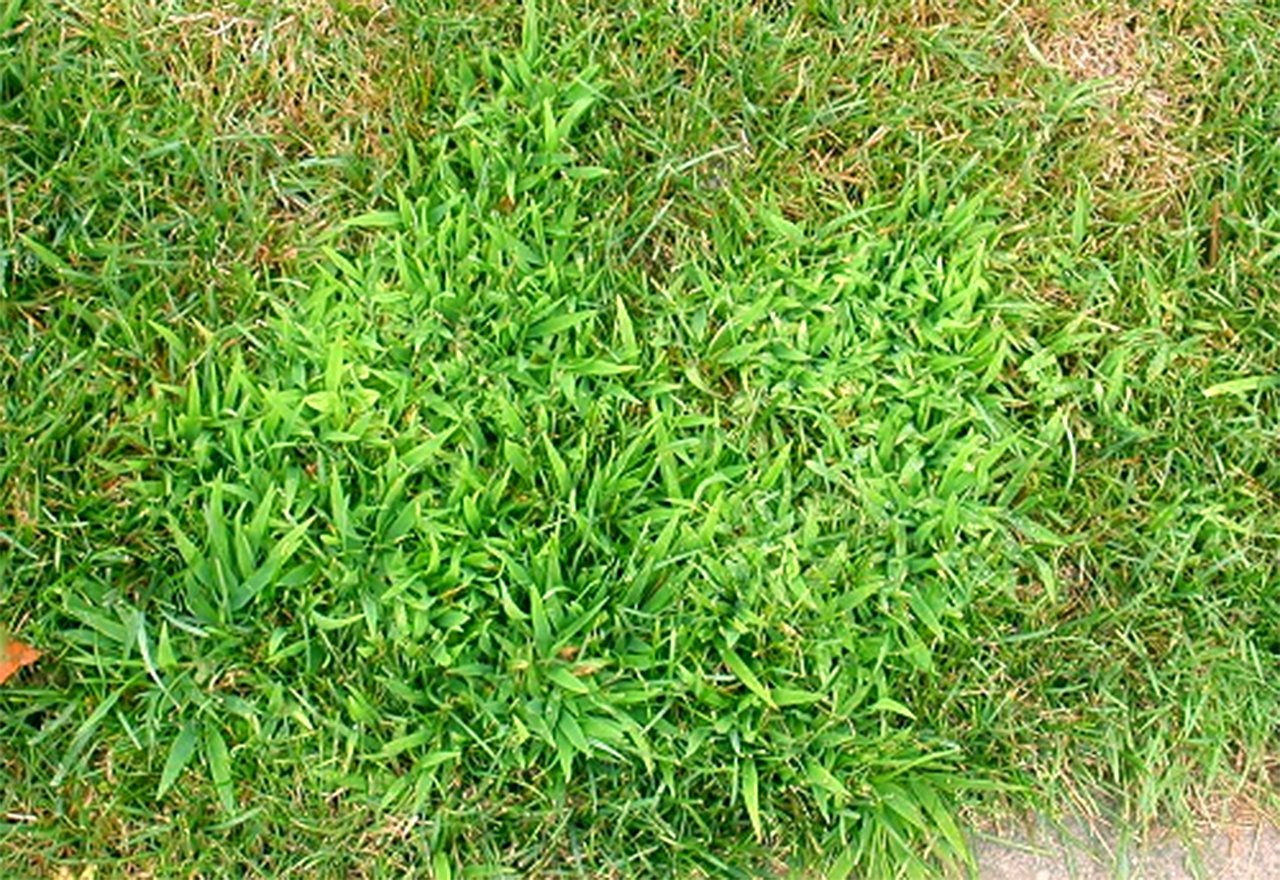An Opportunistic Annual Grass that Grows in Bare Spots with Sunlight

Crabgrass is an opportunistic annual grass that sprouts in the late Spring, anywhere there is bare soil, water, and sunlight. Crabgrass continues to grow all Summer and doesn’t really become ugly until late Summer when it spreads seeds. After this time, Crabgrass is killed by the cold Winter, but the seeds remain intact for the next year. If you are on our Organic Foundation Lawn Care Program, you are gradually building your lawns resistance to Crabgrass. The longer you use our fertilizers, the better able your lawn will be to resist weeds.
As a side note, Crabgrass is not actually bad for your lawn. It won’t crowd out your desired grasses, even though it looks like it does. The only problem with Crabgrass is that it looks bad at the end of Summer. If it doesn’t bother you, it isn’t doing any harm to your lawn.
Crabgrass is opportunistic. It will prosper in any areas that have bare soil and receive sunlight. This often occurs around the edges of the driveway, sidewalk and tree lawn. Our suggested solution is to seed any damaged areas in the Fall and again in the early Spring to try to prevent bare areas and prevent Crabgrass from germinating.
Crabgrass loves salt. If you live in an area with salted roads, your tree lawn is at a high risk for Crabgrass. One recommendation would be to sign up for our Liquid Aeration service in the Spring and Fall, which will help reduce the amount of salt in the soil. Seeding bare areas in the Spring and Fall will also help.

University Studies show that mowing your grass tall, approximately 3.5-4 inches in height, will prevent more Crabgrass than any chemical on the market. The tall grass shades the soil surface and helps prevent Crabgrass from receiving the light it needs to grow. So start mowing high in April and continue to do so until October, when you can start lowering your cutting height before Winter. If you really like the look of a nice short lawn, you might consider seeding with our Green Microclover, which will shade the soil and prevent weeds, even if its mowed short.
Your soil is full of Crabgrass seeds just waiting to germinate. Daily watering helps Crabgrass seeds sprout. For the best defense against Crabgrass, don’t water more than 2 times per week, applying enough water to fill up a tuna can in each session.
Some years have perfect weather for Crabgrass. An especially rainy Spring will help Crabgrass germinate, and a hot Summer will help it grow, while other grasses go dormant. While you can't fight Mother Nature, you can maintain a thick lawn and mow it high!
Unfortunately, there isn’t much you can do about Crabgrass, once you get it. The best solution is to thicken your lawn later in the Summer by seeding to help prevent Crabgrass from returning the next year. Below are a few other suggestions.
If it is manageable, one option is to pull Crabgrass out by hand, or with a weed pulling tool, such as the Weed Out, which is perfect for remove this Crabgrass. If your lawn has a lot of Crabgrass, you may need to live with it this year, but work toward preventing it next year.
There are chemicals that sometimes work to kill Crabgrass. However, they're not completely effective. If the Crabgrass is already big and ugly, the chemicals will just turn it purple and more unattractive. Your best bet is to let Mother Nature take her course and kill it with cold weather.
A thick, healthy lawn is the best defense against Crabgrass. Seeding in the late Summer will add tougher, modern grasses that compete well with Crabgrass. Slice Seeding is great if the problem is throughout your lawn. If it's just patches, rough up the dirt and seed in the Fall and/or Spring.
The fertilizers in our Organic Foundation Lawn Care Program help to increase your lawns resistance to issues, such as Crabgrass. Our program works to continuously strengthen your lawn over time, so the longer you use our fertilizers, the more weed-resistant your lawn will become.
Don’t forget to mow high starting next Spring, to help keep weed seeds from sprouting!
Remember to water your lawn next Spring and Summer in 2 sessions per week, to reduce germination. Avoid watering for short periods of time every day, which promotes the germination of Crabgrass and other weeds.
